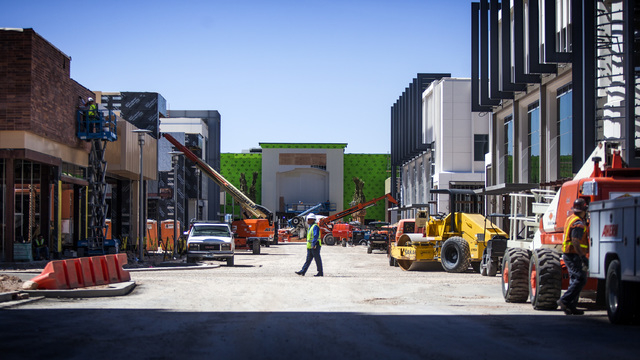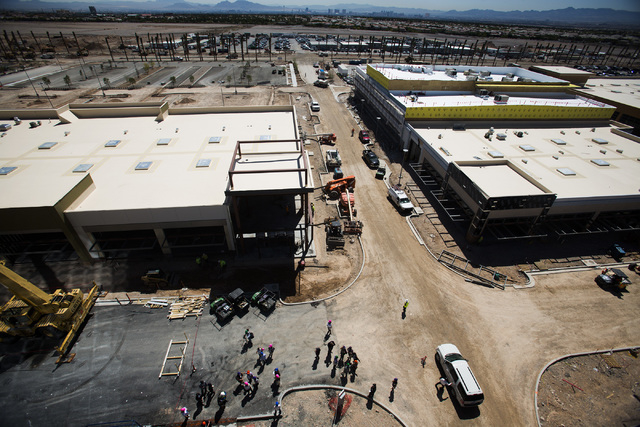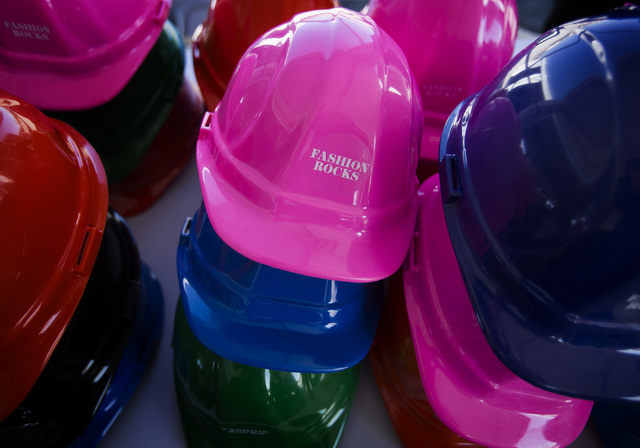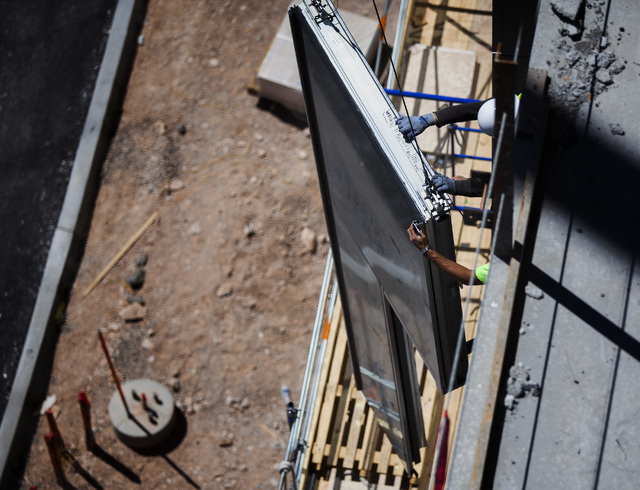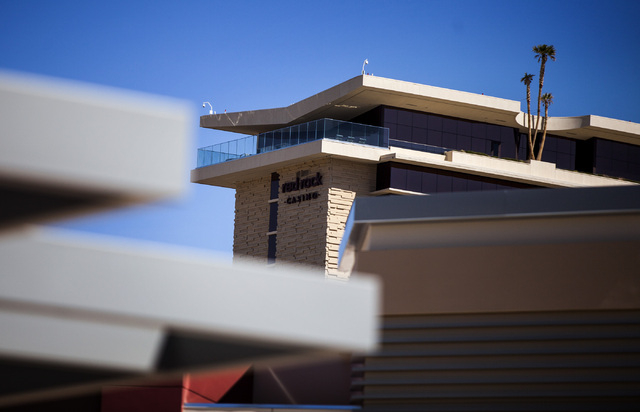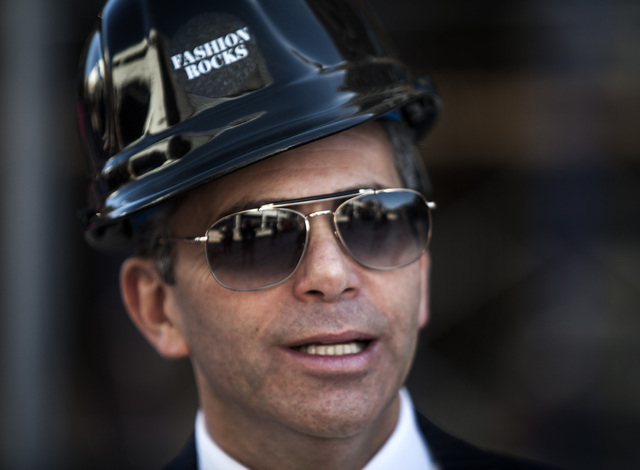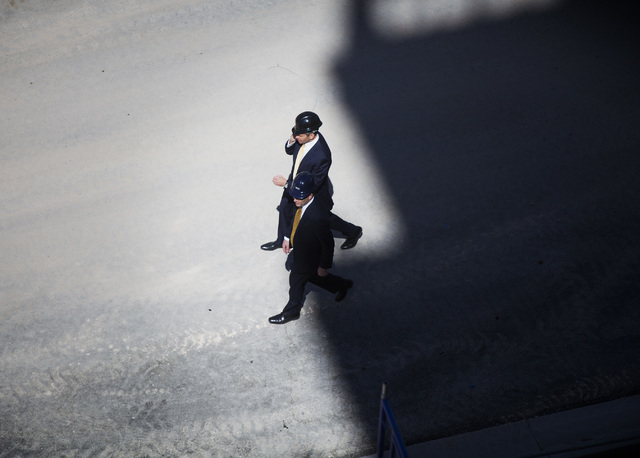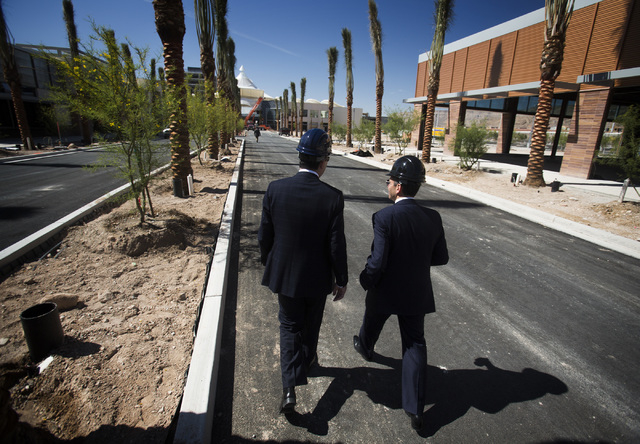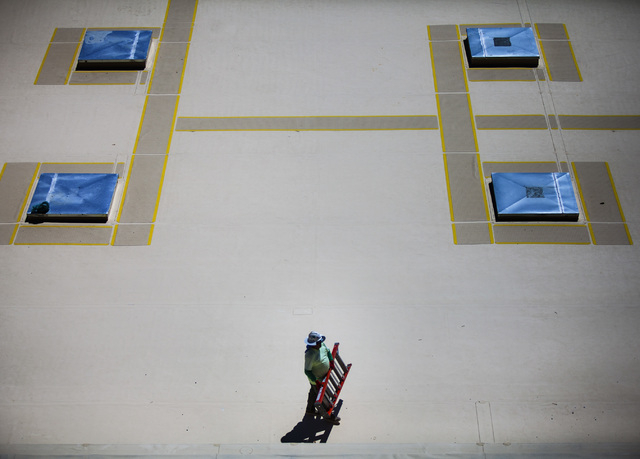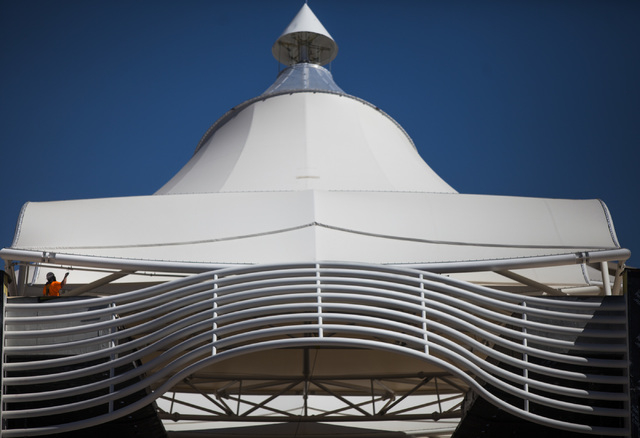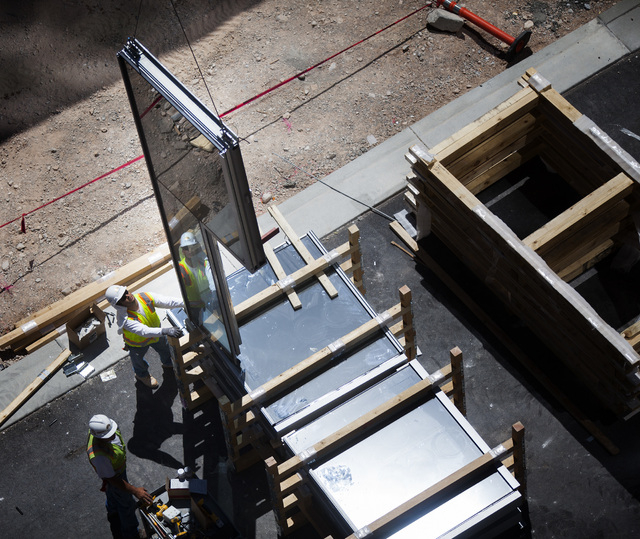Delivering a second downtown
Big change is coming to a suburb near you.
A new urban center is rising out of the desert west of Las Vegas, where The Howard Hughes Corp.’s Summerlin master plan is about to get a bona fide downtown after more than 20 years of mostly suburban, single-family development.
But this city center isn’t just about Summerlin and the people who live there. Downtown Summerlin is a decidedly un-Vegas concept, and as the first urban form of its kind locally, it could help Southern Nevada attract big businesses that have nothing to do with gaming.
“It does provide that supply-side of the equation that may be necessary for large corporate users,” said Brian Gordon, a principal in local research firm Applied Analysis. “There are relatively few options for a major relocation or corporate user looking to expand. In the entirety of the Las Vegas Valley, you could probably count them on a single hand.”
Summerlin’s next chapter also offers a rare opportunity to stop and think about the urban ideas shaping growth in a post-recession Las Vegas. What those notions seem to be saying is that the city is growing up, with the population and diverse consumer markets to support both a revitalized downtown Las Vegas and a new suburban “downtown.”
Although redevelopment of downtown Las Vegas has attracted worldwide media attention, Summerlin’s recent progress has been quieter. Still, it’s no less important to Southern Nevada’s future.
Handled properly, Downtown Summerlin could forge a new way of life for hundreds of thousands of locals, and complement rebuilding in the urban core.
“It’s going to be a pretty major part of the Las Vegas urban form, and it’ll be interesting to see how it evolves over time,” said John Restrepo, principal of RCG Economics in Las Vegas.
The question is, what kind of evolution — if any — Summerlin and its new downtown will advance across the Las Vegas Valley. Some observers say the concept behind Downtown Summerlin is outdated and may bring nothing new to the city. Even worse, it could actually hurt revival in Las Vegas’ traditional city center.
major evolution in city planning
Downtown Summerlin, a 400-acre tract east of the 215 Beltway between Sahara Avenue and Charleston Boulevard, is about to become the heart of an edge city, an urban form that changes the way a region “lives, works, plays and prays,” said Joel Garreau, author of “Edge City: Life on the New Frontier,” a seminal 1991 book on the global phenomenon.
Summerlin’s potential job count “is such a big number that there is no way this is a suburb. It’s not a ‘sub’ anything. It is its own urb,” Garreau said.
The edge-city idea is simple at first glance. Edge cities are essentially big clusters of upscale offices, shopping malls and entertainment centers outside a metro area’s main central business district. Think Perimeter Center north of Atlanta; Tysons Corner east of Washington, D.C.; Irvine, in California’s Orange County.
The textbook definition includes at least 5 million square feet of Class A office space and 600,000 square feet of retail. Edge cities also have more jobs than bedrooms. They’re viewed by residents as a distinct place, and they were empty tracts of land 30 years ago.
But that basic concept is deceptively sophisticated: Edge cities are actually “the biggest revolution in 150 years in how we build cities,” said Garreau, the Lincoln professor of law, culture and values at Arizona State University’s Sandra Day O’Connor College of Law, and a Future Tense Fellow with the New America Foundation in Washington. “Cities have been cradles of civilization for 8,000 years. So if we redefine how and where cities are created, we’re redefining who we are, how we got that way, where we’re headed and what makes us tick.”
In 1991, Garreau identified the Strip as the only thing approaching an edge city in the Las Vegas Valley. Sure, it lacks Class A office space and homes, but it is the city’s employment center and the foundation of people’s ideas about what Las Vegas is.
But the Strip is an entertainment zone, not a second downtown. The region has never had one of those.
North Las Vegas’ downtown revolves around jobs in local government. The entire city has just 1.3 million square feet of office space, and lacks the household income to create critical retail mass, Restrepo said.
Henderson has 7.2 million square feet of office space, but only about 1 million square feet of Class A quality, according to Applied Analysis. Henderson’s Water Street-centered downtown is also driven by jobs at City Hall.
That leaves Downtown Summerlin to claim gleaming glass high-rises, millions of square feet of high-end commercial space and thousands of new jobs and residents.
This exponential leap in local development is only now possible because of regionwide evolution.
“The Vegas economy has been changing for 20 to 30 years. It used to be a one-industry town. There was tourism and gaming, and that was it,” Garreau said. “But because of the city’s proximity to California, its low taxes and its abundant workforce, you’re seeing a much more diverse economy.”
That includes growth in warehousing, manufacturing and defense industries. And you’re not going to put those offices, warehouses and factories on the Strip.
“So your real estate market has been broadening as the economy has been changing,” Garreau said. “These things occur in response to growth. Edge cities do not cause growth. They’re just a systematic attempt to eliminate every barrier to growth that they can.”
There have been few barriers to growth in Summerlin.
single-family homes not part of plan
Summerlin, a project of The Howard Hughes Corp., has gone from parched desert in the early 1990s to a master-planned community of 100,000 residents today. Most locals see the 22,500-acre development as a bedroom community — a suburban enclave where people go home after a long day’s work on the Strip, in a downtown office tower or in the glass cubes of The HC|Hughes Center at Flamingo and Paradise roads.
That reputation is bound to change with Downtown Summerlin. The land, which will cost billions to build out, is already home to Red Rock Resort. In October, it will add a 1.6 million-square-foot, outdoor shopping, dining and entertainment district laid out in traditional, square city blocks. More than 1 million square feet of Class A office space and at least 4,000 town houses, apartments and mid- and high-rise condominium towers for up to 10,000 residents are expected to come in the next decade.
And don’t forget the plan to put a Triple A baseball stadium smack in the center.
What the new downtown won’t have: More of the single-family homes that defined Summerlin’s first two decades.
“We really don’t have a social gathering place for the community. Now, we’re at a critical mass where it makes sense,” said Kevin Orrock, president of Summerlin and vice president of master-planned communities for The Howard Hughes Corp.
But Downtown Summerlin will be more than a mall tricked out like a city center where suburbanites go to shop and eat.
“Given the size and scope of the project, it will likely draw residents and potentially even visitors from other areas,” Gordon said.
Officials with The Howard Hughes Corp. say they also expect Downtown Summerlin to draw businesses from other areas, including downtown Las Vegas or The HC. They say there’s potential as well for Class A, build-to-suit projects for companies that want to anchor a corporate or regional headquarters.
Landing those kinds of businesses is key to creating an edge city in full, and Downtown Summerlin’s under-construction One Summerlin office tower could help get it done. Garreau’s guideline for attracting major corporations is 20,000-square-foot office floor plates hard to find in traditional downtowns built on small lots. The nine-story One Summerlin more than delivers, with 23,000 square feet per floor.
Summerlin already has 3.3 million square feet of office space and 2.1 million square feet of retail space. Once its downtown is complete — and before any more commercial development along the Beltway between Town Center Drive and Summerlin Parkway — Summerlin will approach that magical 5 million-square-foot threshold.
Five million square feet of high-end office space would support 40,000 white-collar jobs — more than you’ll find in all of downtown Memphis, Tenn., Garreau said.
With that will come “secondary explosions,” or proliferation of new amenities such as bookstores and high-end restaurants with $30 entrees — “the attempt of a market to produce what we see as civilization,” he said.
And the population will be there to support it all.
About 16,500 of Summerlin’s acres are built out, home to 100,000 people. The final 6,000 acres will also have 100,000 people in higher density neighborhoods. Throw in The Lakes, Desert Shores, Peccole Ranch and other nearby master plans, and Downtown Summerlin will have an immediate population of 400,000.
“That’s a fairly good-sized city with the potential for significantly more development beyond Downtown Summerlin,” Orrock said.
And in another classic edge-city trait, economic disaster helped drive Summerlin’s new look.
A decade ago, Downtown Summerlin’s shopping center was envisioned as another “typical indoor mall,” Orrock said.
No surprise there. The Howard Hughes Corp. was bought in 1996 by mall developer Rouse Co., then sold in 2004 to mall trust General Growth Properties. Each focused on what it knew best.
But in 2010, bankrupt General Growth spun off The Howard Hughes Corp., which once again became its own entity — with its own way of thinking.
“We have a longer-term view of what will be developed,” Orrock said. “Now, it’s going to be an urban experience, which I think is what people really want these days.”
If you’re looking for urban life now, though, head east to downtown Las Vegas, in the midst of its own metamorphosis.
downtown las vegas revitalization
Downtown Las Vegas is grabbing international headlines, and it’s all thanks to a leader of the Internet economy.
Through his Downtown Project, Zappos.com CEO Tony Hsieh is dropping $350 million to rebuild and diversify the oldest and most urban part of the city. The project is attracting the creative class from high-tech hotbeds such as Seattle, San Francisco and Austin, Texas. Hsieh rescued the abandoned City Hall on Stewart Avenue by moving Zappos’ headquarters there. And he funded a health clinic with the lofty goal of changing how Las Vegans consume medical care.
The idea, Downtown Project spokeswoman Kim Schaefer said, is to revitalize and bring a sense of community back to the heart of Las Vegas.
“In the 1950s, downtown was a place where people shopped and brought their families. We’re really hoping to help recapture that by investing in small businesses and entrepreneurs who bring a real diversity and sense of connection to the neighborhood,” Schaefer said. “That connection may not have existed for people who have lived in Las Vegas for many, many years.”
The Downtown Container Park in particular has been a “game changer,” Schaefer said. The center, at 707 Fremont St., houses boutiques and restaurants in stacked metal shipping containers. Its centerpiece is a distinctly un-Vegas “treehouse” with a 33-foot slide, and there’s no place on the block to lay a bet.
The center has attracted families from across the valley, and has forced a “monumental shift” in the demographic profile of downtown visitors, Schaefer said.
The Downtown Project is also expanding the area’s visitor profile with events such as First Friday, which brings as many as 25,000 people downtown each month, and the Life Is Beautiful music, food and arts festival, which lured 60,000 people over two days in October.
And that’s just a start. Schaefer said the project is about two years into its efforts and has created about 630 jobs. The coming three to five years are sure to be a “really impactful time,” she said.
Although it might seem that Downtown Summerlin would be competition to a revived downtown Las Vegas, most observers said the opposite will be true — they’re different enough to complement each other.
Perhaps the biggest difference is that Downtown Summerlin is a blank canvas. Downtown Las Vegas, on the other hand, is working around existing buildings and blocks.
“Downtown Las Vegas has the history. We don’t have that in Downtown Summerlin,” said Julie Cleaver, vice president of planning and design for The Howard Hughes Corp. “That said, we have a great opportunity to build something from the ground up that we can get right to start with.”
downtowns might be interdependent
Schaefer, a former Summerlin resident who moved downtown in 2012, said she thinks the valley can support two downtowns.
“There’s room for all kinds of new ways to think about living in Las Vegas,” she said. “I think people have, for a very long time, had a specific way of looking at living here. It’s been a suburban car-culture kind of world. Creating dense, urban areas is a real opportunity for all of us, whether we’re in Summerlin or downtown, to rethink the way we live.”
Besides, the city is big enough to support both as long as the two downtowns want to be different animals, Gordon said.
Garreau agreed.
“I would imagine there isn’t going to be a huge amount of competition because they’re so different,” he said. “The nice thing about ... an old downtown is that it’s got crapped-out real estate you can get for nothing. That’s hugely attractive to poets and artists and musicians and people who don’t have any money, and all they have is creativity. Summerlin can’t compete with that because it’s all brand new, and there is nothing below-market.”
In fact, the two downtowns may even need each other.
The most successful edge cities are in metro areas with growing, vital urban cores, Garreau said. That’s because edge cities free downtowns of being all things to all people, and let them focus instead on developing “things you can have only one of,” such as a federal courthouse or a regional performing arts center.
Architect, urban planner and downtown Las Vegas advocate Robert Fielden agrees we have room for both a center city and an edge city, in part because local officials 15 years ago failed to refashion downtown into a place where people wanted to live and work.
Revitalization efforts are helping to save downtown Las Vegas, but will the urban core “have the vitality in terms of economic investment that you would find in the new Downtown Summerlin? Absolutely not,” Fielden said.
Downtown Summerlin, he said, will fill a gap that downtown Las Vegas cannot: Demand for “premier shopping and premier activities and events for locals.”
Yet not everyone is convinced.
Some urban planners say they’re concerned about the effect an edge city may have on downtown Las Vegas, and perhaps even the quality of life of the whole valley.
Hugh Kelly, a New York University professor of clinical real estate, said the edge-city concept was “state of the world” 20 years ago. Today, he said, he’s not optimistic about edge cities as real estate ventures. The classic model starts with a mall, throws in housing development and waits for office projects to come along. It’s just as car-centric as any other suburban sprawl, and the “multiple dozens” of edge cities across the country are “a plain-vanilla, very unimaginative model,” he said.
“There’s a difference between an ingredients list and a recipe,” Kelly said. “What (Garreau) offered was an ingredients list. And many places have gone shopping for the ingredients of a successful place.”
Kelly said places that have the best shot at the right urban flavor follow downtown Las Vegas’ redevelopment approach: a walk-to-work model that creates a civic center; builds organically on its employment base; and adds retail as the population requires it. But that can’t work if another development is sucking all of the air out of the room.
“The thing I’d be worried about is that the new model will be successful enough to limit the ability of downtown to reach its potential. It draws both workers and potential residents away, unless you can argue that having both of them will attract more companies, and more population growth, than just one of them would.”
There’s also the question of whether inner-city problems such as crime and traffic will migrate to the urbanized edge, where people have gone to avoid them.
Garreau said the edge cities he wrote about 20 years ago still have “vastly” lower crime rates than do traditional downtowns. They also have better schools and are ethnically more diverse.
But traffic remains a universal headache.
“Edge cities generate vehicular traffic. But if you were to ask the common person, most people would like to be able to walk to work, or at least take a short bike ride or the bus to work,” Fielden said.
And because of their size and development, edge cities strain resources such as fuel, water and electricity — “all of the things we have to import because we can’t create them ourselves,” he added.
Hughes Corp. executives say they’ll deal with traffic by having multiple routes into Downtown Summerlin, including two Beltway exits and a street that runs through its heart. They also note that it takes as long to drive from Green Valley to The HC office complex as it does to drive from Green Valley to Downtown Summerlin on the 215 Beltway.
Fielden said he and the nonprofit Urban Land Institute hope to work with Hughes officials to create a traffic-easing light-rail or streetcar system on Sahara Avenue that would loop through Downtown Summerlin.
In the end, the success or failure of a Las Vegas edge city, and of its traditional downtown, may have less to do with traffic, schools or anything else so concrete, Garreau said.
“Builders of edge cities have gotten pretty good at delivering anything you can measure with dollars. But that’s increasingly not where the competition is. The competition is over the squishy stuff that’s by definition very difficult for the market to create. Will the area ever be a good place for a Fourth of July parade? Will it be a good place to fall in love? Those things are incredibly important. They’re at the heart of civilization, soul, identity and community. But they’re almost impossible to quantify.”
Contact reporter Jennifer Robison at jrobison@reviewjournal.com or 702-380-4512. Follow @J_Robison1 on Twitter.



